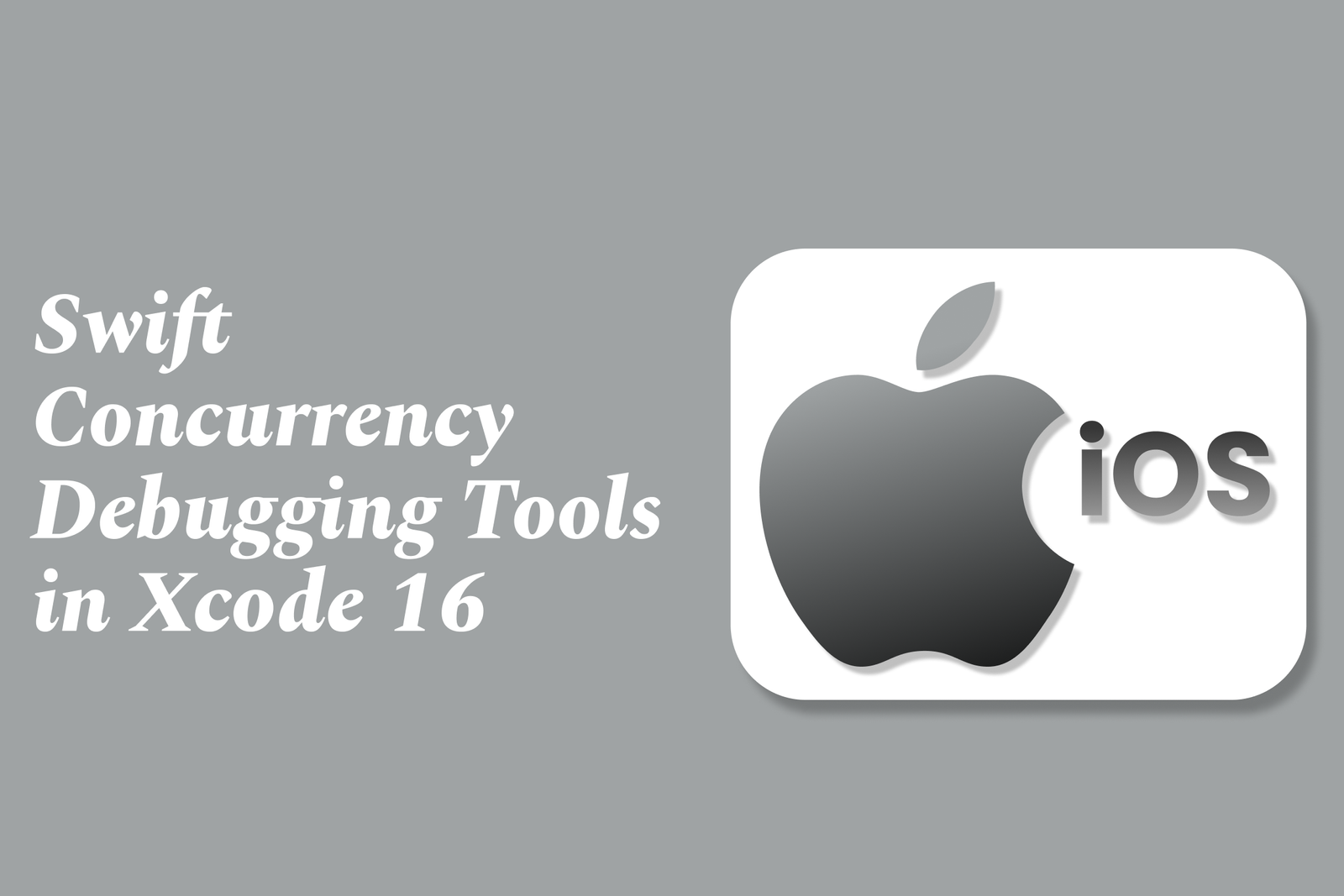Swift Concurrency debugging tools in Xcode 16
Swift Concurrency Debugging Tools in Xcode 16 provide powerful instruments to visualize and analyze async-await task execution, helping developers identify concurrency issues, optimize performance, and debug crashes in Swift’s modern concurrency model efficiently.
Swift Concurrency Debugging Tools in Xcode 16
1 ) Introduction to Swift Concurrency Profiling
Xcode 16 introduces a dedicated Swift Concurrency instrument accessed via Product > Profile, aimed at helping developers debug their async await codebases efficiently. This tool is designed to visualize concurrency behavior such as task scheduling and execution across queues, particularly important for performance critical apps running many async calls (e.g., 60 fps animation loops).
2 ) Common Issues and Use Cases Addressed
Developers observe a large number of queues in the Debug Navigator during high frequency async calls, causing confusion on performance bottlenecks.
The instrument helps identify misuse or overuse of concurrency APIs that lead to crashes or inefficient task handling, such as crashes from cooperative dispatch queues.
Real world examples include apps migrating from DispatchQueue based concurrency to Swift concurrency which report EXC_BREAKPOINT crashes on cooperative queues.
3 ) Crash Analysis and Debugging with Swift Concurrency Tools
With Swift Concurrency, crashes like `EXC_BREAKPOINT` or `EXC_BAD_ACCESS` can occur due to subtle concurrency misuse or compiler optimization bugs.
Meanwhile, understanding stack frames and crash threads in async contexts is important; the new tooling helps highlight job execution paths, thread activity, and potential mismanagement of async tasks.
Issues are often exacerbated in Release builds with optimizations enabled, where debug symbols are limited, making crash traces minimal or unavailable.
4 ) Tips and Best Practices for Using Concurrency Debugging Tools in Xcode 16
Removing third party crash reporters can improve crash signal quality to better leverage native Xcode debugging features.
Running instruments on real devices (not simulators) can expose concurrency bugs specific to device runtime environments and compiler optimizations.
Iteratively profiling Release builds with Swift Concurrency tools aids in isolating inlined getters or async tasks causing crashes.
Developers benefit from gathering minimal reproducible examples which can reveal concurrency edge cases or compiler related faults.
5 ) Current Limitations and Ongoing Improvements
Some crashes in optimized builds provide little stack trace, which can confuse root cause analysis.
Apple engineers and the community suggest that improvements to Swift Concurrency tooling and diagnostics are ongoing with each Xcode iteration.
Developers should stay updated on Xcode releases, utilize forum and GitHub resources, and report issues with detailed repro steps to accelerate fix cycles.
6 ) Community and Developer Insights
Discussion forums reveal practical developer experiences including crashes in cooperative dispatch queues or issues after migrating to Swift concurrency.
Robust tooling now means developers can methodically debug concurrency behavior rather than guesswork or relying solely on log statements.
Swift concurrency debugger in Xcode 16 is a significant step toward safer, performant async Swift app development but requires mastery to fully utilize its power.
Summary:
Xcode 16’s Swift Concurrency debugging tools empower developers to profile and troubleshoot async await based code with greater precision. By visualizing task queues, execution contexts, and thread activity, developers can address common concurrency pitfalls — from unexpected queue proliferation to elusive runtime crashes. However, challenges remain in optimized builds and real device environments, underscoring the importance of continued tooling refinement and community collaboration. Using these tools alongside best practices, Swift developers can significantly enhance app stability and performance amidst complex concurrency scenarios.
https://justacademy.in/news-detail/how-to-get-hired-as-flutter-dev-in-2025
https://justacademy.in/news-detail/google-android-ecosystem-partnerships
https://justacademy.in/news-detail/android-device-update-policies
https://justacademy.in/news-detail/dart-3.2:-what’s-new-for-flutter-devs
https://justacademy.in/news-detail/react-native?s-new-live-reload-vs-fast-refresh-showdown
Related Posts
Java supports GDPR and data privacy by enabling secure data handling through encryption, controlled access, and precise data management. It allows developers to minimize PII exposure, ensure data confidentiality, and design workflows that comply with data protection regulations effectively.
Java code quality tools have evolved to include advanced static analysis, integrated security checks, and AI-powered code reviews. These updates help developers detect bugs, enforce coding standards, and enhance security, streamlining the development process and improving overall code reliability.
Java remains a cornerstone in big tech companies, evolving with modern features like records, pattern matching, and virtual threads. Its robust ecosystem, enhanced performance, and growing AI integrations keep it vital for both legacy systems and innovative new projects.
Java and CI/CD pipeline optimizations streamline Java application development by automating builds, tests, and deployments. They improve efficiency through parallelization, caching, and secure secrets management, enabling faster feedback loops and more reliable, scalable software delivery.
Java supports modern cryptography standards through its flexible Java Cryptography Architecture (JCA), enabling integration of advanced algorithms like AES, EdDSA, and post-quantum tools. Libraries like Bouncy Castle offer FIPS-certified, hardware-accelerated implementations for secure development.
Java 23 enhances record patterns by enabling concise, direct destructuring of record components within pattern matching, simplifying type checks and data extraction. This improvement boosts code readability and expressiveness by reducing boilerplate in handling immutable data classes.
Java remains a top choice for mobile app backends, powering scalable, secure, and high-performance server-side solutions. Latest trends include cloud-native microservices, reactive programming, and enhanced JVM optimizations, enabling efficient, flexible, and robust mobile backend development.
Java SE 24 and LTS Java SE 21 offer enhanced features and performance, while Apache Spark 4.0.0 introduces Scala 2.13 support and advanced ML and SQL capabilities. Together, they empower developers to build scalable, high-performance data applications with modern tools.
JUnit 5 modernizes Java testing with a modular architecture, improved assertions, and seamless Java 8+ support. Beyond JUnit, tools like Mockito and AssertJ enhance mocking and assertions, creating a powerful, flexible ecosystem for writing clean, efficient Java unit tests.
Java plays a pivotal role in cloud automation tools by providing a robust, platform-independent language used to build scalable automation frameworks like Jenkins and Selenium, enabling efficient CI/CD pipelines, testing, and orchestration across diverse cloud environments.










